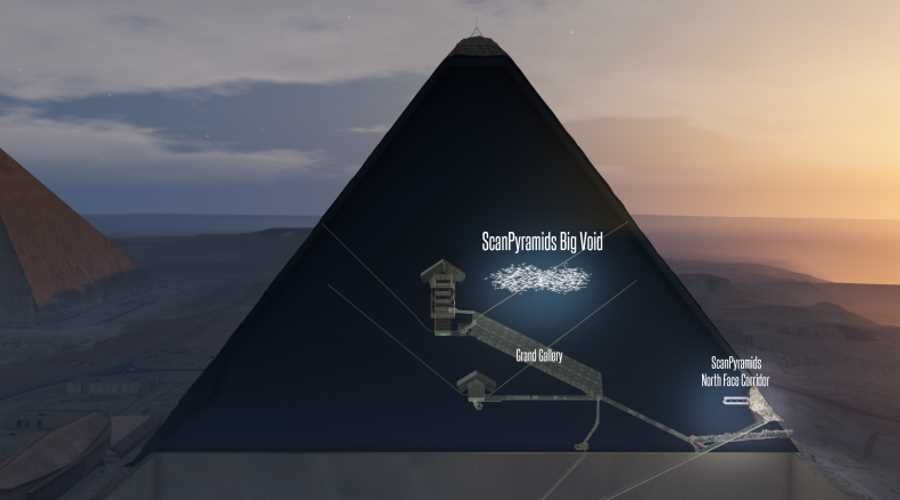An empty space has been discovered inside the Great Pyramid
Thanks to a technique using muon beam scanning, scientists have confirmed the presence of a large empty space in the pyramid of Cheops. The void indicates the presence of a hidden chamber, although officially no one is talking about it.
Research results published m.in. on the „Nature” show that the Great Pyramid, more than 4,500 years old, still hides secrets from us.
The Great Pyramid, also known as the pyramid of Cheops or the pyramid of Chufu, is located on a plateau in Giza. It is the largest pyramid built by the ancient Egyptians. It was formed during the Old Kingdom period around 2560 BCE. Egyptologists assume that the construction time of the monument was 20 years, and that it was intended as the tomb of Pharaoh Cheops (Chu-fu). The pyramid is nearly 140 metersów height (it originally counted 146.59 metersów) and 230 meteróin width. It consists of about 2.3 millionóin stone blocksów.
Despite being one of the oldest and largest structures on Earth, amongród researchers have no consensus on how it was built. To better understand its internal structure, scientists scanned the pyramid using muonsów – impermanent elementary particles belonging to the lepton categoryóin, whichóre are only partially absorbed by the stone.
„Like the X-rays, które can penetrate the body and enable bone imaging, these elementary particles can maintain a quasi-linear trajectory, passing through hundreds of meters ofóin stone before the disappearance or absorption of the” – reads on the pages of „Nature”.
Researchers working under the project „Scan Pyramids”, thanks to whichórmu possible discovery, they used róalso dwóch other techniques – thermography – Mid-infrared imaging technology and computer simulations.
The resultingób imaging to visualize the known and potentially unknown spaces in the pyramid in a wayób non-invasive. With this, scientists have confirmed the existence of a hollow space about 30 meters longóin just above the so-called. Grand Gallery. The discovered void has been laboriously named ScanPyramids Big Void and is located 21 metersów above ground level.
The discovery was made possible by a combination of archaeology and particle physics. The research was conducted by scientistów from the HIP Institute (Heritage Innovation Preservation Institute in Paris) in France and Nagoya University in Japan. Study authors Mehdi Tayoubi and Kunihiro Morishima are convinced that the discovered space is a deliberate feature of the pyramid’s architecture, although they do not claim it is a hidden chamber. However, what is located there is currently a mystery.
Scientists say it is unlikely that the discovered void is a sign of a „internal wear and tear”, some kind of stone collapse or design flaw. Muon scanning produced the same patterns in the void region as in the Great Gallery below.
The role and purpose of the found space is unknown. It is also unclear how to get to it without destroying the structure. It is too early to speculate on the true nature of the discovered void, but a hidden chamber is not impossible. – Such a large empty space cannot be a coincidence – Mehdi Tayoubi said at a press conference – wspóresearch rover.
The idea of scanning the pyramids with muons came out back in the 1960s. From a physicist working on the project "Manhattan", Nobel laureate Luis Alvarez. However, his teamół did not have the technology capable of performing this task and the knowledge to do so. Nowadays, a technique known as muonography (muon radiography) is used by scientists to analyze volcanoesóin whether to use archaeological. It was also used to image the inside of the Fukushima reactor after the 2011 disaster. It used róAlso the US military in Afghanistan.
